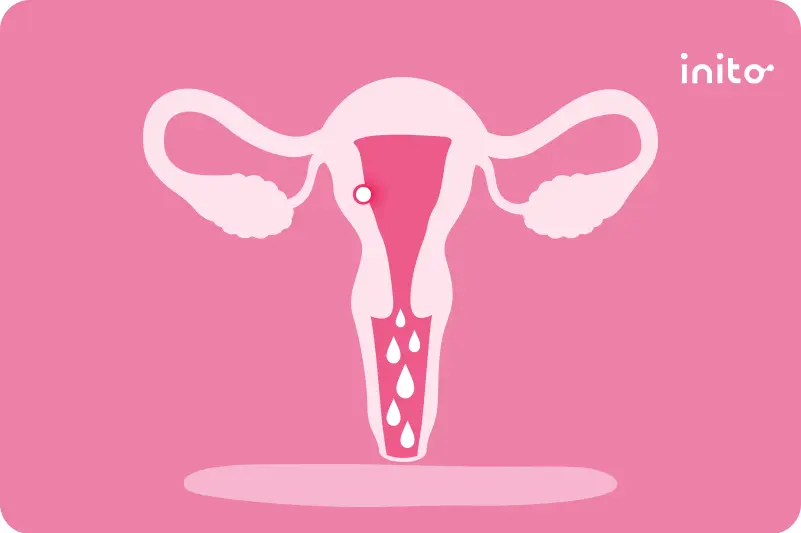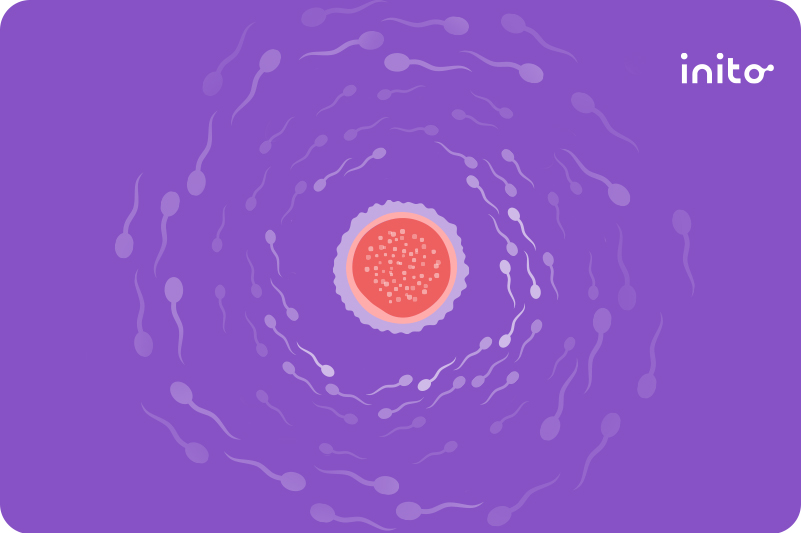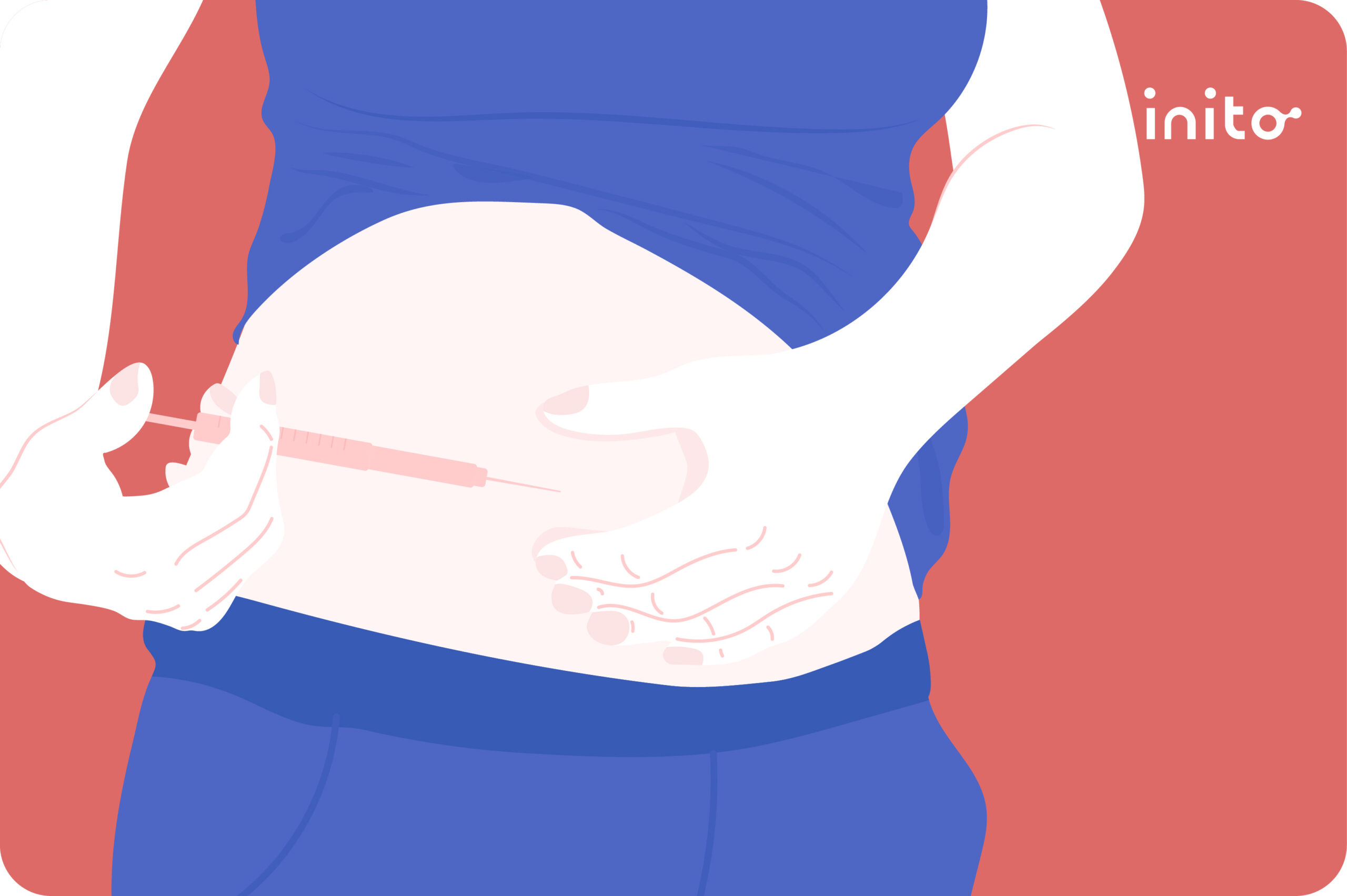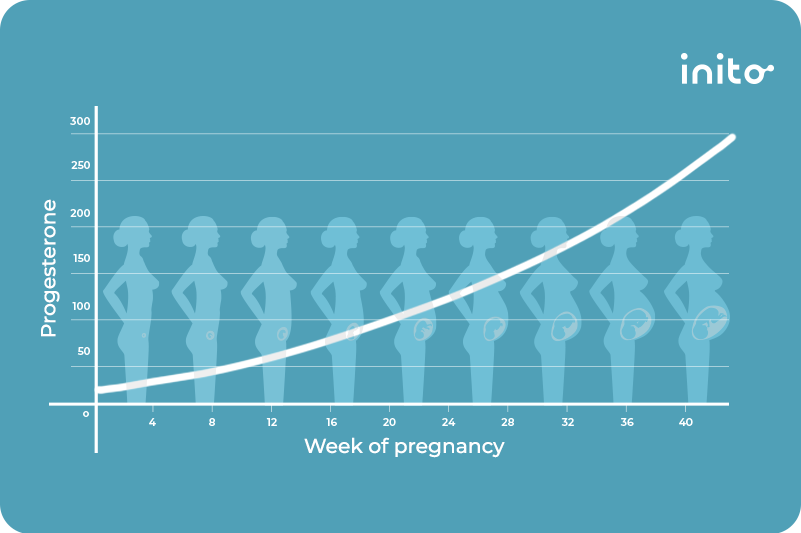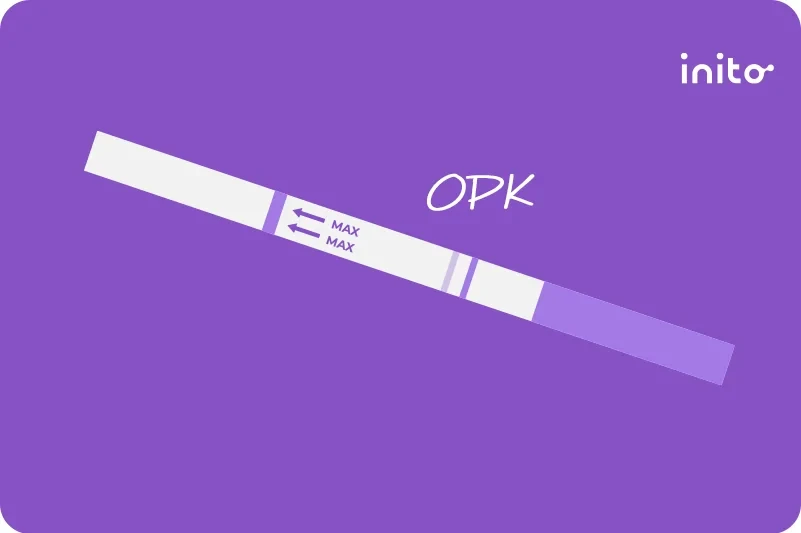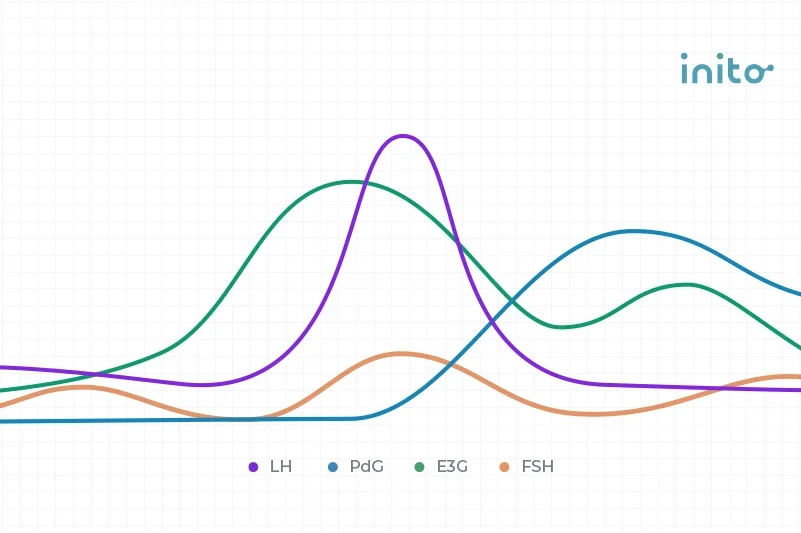Content table
If you’re trying to conceive, you’ve probably heard of implantation bleeding. You may have even experienced it.
For some women, it’s one of the earliest signs of pregnancy, and enough to cue a happy dance.
But what about heavy implantation bleeding?
Is it normal and nothing to worry about? Or does it mean something’s amiss?
In this article, we’ll cover what you need to know about heavy implantation bleeding, including what it is, why it happens, and when to call your doctor.
What is implantation bleeding?
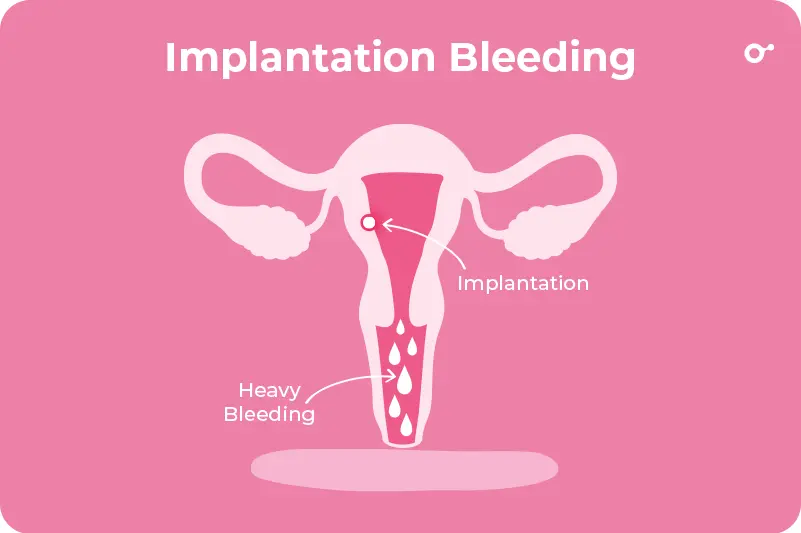
Implantation bleeding is light bleeding or spotting that happens shortly after implantation.
After fertilization, the embryo begins multiplying its cells rapidly. It then travels down your fallopian tube until it reaches your uterus.
Once there, the embryo burrows into your uterine lining, making itself cozy for the long journey ahead. When the fertilized egg implants, it can cause blood vessels to rupture, which may lead to spotting (aka implantation bleeding).
Not all women experience implantation bleeding. And having it during one pregnancy doesn’t guarantee it’ll happen with others.
When does implantation bleeding happen?
Implantation can occur anytime between 6 to 12 days past ovulation, but it usually happens around 8-10 DPO.
But implantation isn’t a quick process. It occurs over several days.
That’s why implantation bleeding usually doesn’t occur until 10-14 DPO, or a few days before your expected period.
The timing makes it tough to tell whether your bleeding is really a sign of pregnancy or just your period making an unwelcome visit.
Yet there are a few ways to tell them apart.
Implantation bleeding vs. period: how to tell the difference
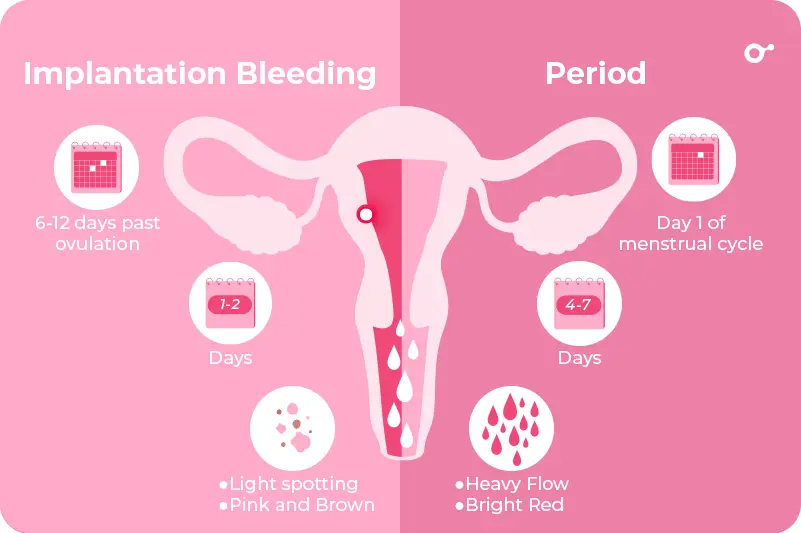
- Duration: Implantation bleeding lasts anywhere between a few hours to a couple of days. As you know, your period is much longer, typically between 2-7 days.
- Flow: For most, implantation bleeding is more like spotting. So it’s much lighter than your menstrual flow. Although there are rare exceptions – more on this later.
- Color: Implantation bleeding may appear light pink or even dark brown. But period blood is usually bright or dark red.
- Clotting: Menstrual flow is viscous and often contains blood clots. But implantation bleeding should be free of clots.
Learn More: Implantation Bleeding vs. Periods: What Does Implantation Bleeding Look Like?
Besides bleeding, there are some other signs of implantation, including:
- Mild cramping
- Tender breasts
- Headache
- Fatigue
- Mood swings
- Food cravings
Learn More: Implantation: Everything You Need to Know
But what’s confusing is that many of these symptoms mimic PMS symptoms. So how do you know whether there’s a baby on board or Aunt Flo is on her way?
Taking a pregnancy test is the only surefire way to know. The trouble is, if you test too early you’re unlikely to get accurate results.
For this reason, it’s best to wait until around 15 DPO to take a pregnancy test.
But, there is another way to tell whether your bleeding is due to implantation or your period. Check your progesterone levels.
After ovulation, progesterone rises. This causes the uterine lining to thicken to support a possible pregnancy.
If fertilization doesn’t occur, progesterone drops. But if a sperm and egg meet, progesterone continues to rise to nourish the developing baby.
How heavy can implantation bleeding be?
Usually, not very!
As mentioned, implantation bleeding is typically much lighter than your menstrual flow.
Some women may only notice a pink tinge on their underwear or on toilet paper when they wipe. Others may need a pantyliner.
But every woman’s body is unique. While rare, some women may experience heavier bleeding during implantation.
Why does heavy implantation bleeding occur?
No one really knows. But there are some theories.
The most popular one is heavy implantation bleeding happens when you’re carrying twins. Although this is based solely on anecdotal evidence.
The theory claims that because twins stretch your uterus more, they may cause heavier bleeding.
While this theory may be exciting (or even overwhelming), there’s no research to confirm this.
Has anyone had heavy implantation bleeding and still was pregnant?
Mommy forums are filled with stories of women with heavy implantation bleeding that end up carrying the baby to term.
But unfortunately, there isn’t much research to back this up.
Yet, some evidence does offer a glimmer of hope.
One study followed the bleeding patterns of 151 pregnant women during their first trimester. One subject had heavy bleeding for five days, using up to 3 pads or tampons daily. This pregnancy still resulted in a live birth.
Yet, it’s unclear whether this bleeding was due to implantation or something else. While possible, more research is needed.
So if you’re experiencing heavy bleeding and suspect you’re pregnant, always talk to your doctor.
There are some serious conditions that can cause unexpected bleeding (more on this later). And it’s always better to be on the safer side.
Is heavy implantation bleeding normal?
Typically, no.
According to the ACOG, around 15-25% of pregnant women experience implantation bleeding. But for the majority of these women, bleeding tends to be light.
That’s not to say that heavy bleeding doesn’t occur in early pregnancy, because it does. Yet the cause of these bleeding episodes remains unclear.
For example, one study tracked the bleeding patterns of over 4,500 women during their first trimester of pregnancy.
They found that of all bleeding episodes:
- 75% had spotting
- 18% had light bleeding
- 6% had heavy bleeding
It’s worth noting that most heavy bleeding episodes happened between the sixth to eighth weeks of pregnancy. This is far past the typical implantation window.
So clearly, there are other causes of heavy bleeding in the first trimester besides implantation.
Bleeding could be a sign of something more serious, such as Von Willibrand’s Disease. This is a bleeding disorder where the blood does not clot properly.
But it could also be due to problems with implantation or a sign of early miscarriage.
What else can cause bleeding in the first trimester?
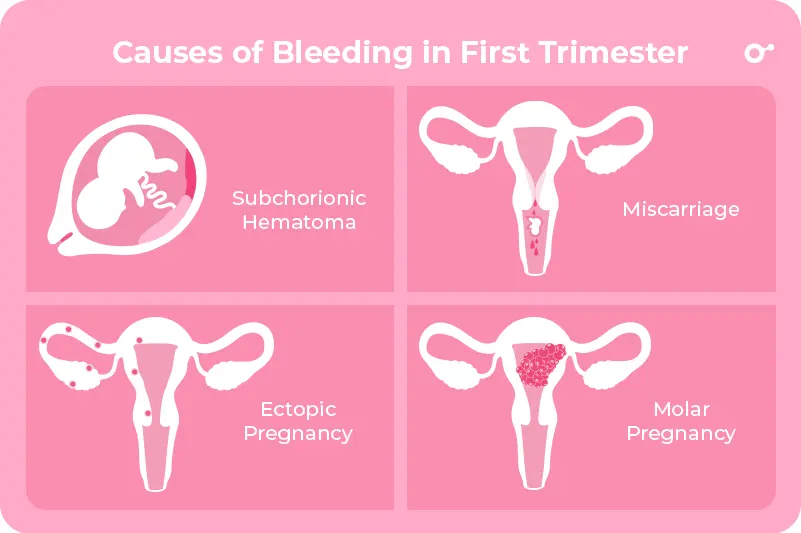
Implantation bleeding is harmless. But some serious conditions may also cause vaginal bleeding during the first trimester. Here are a few of them:
Subchorionic hematoma
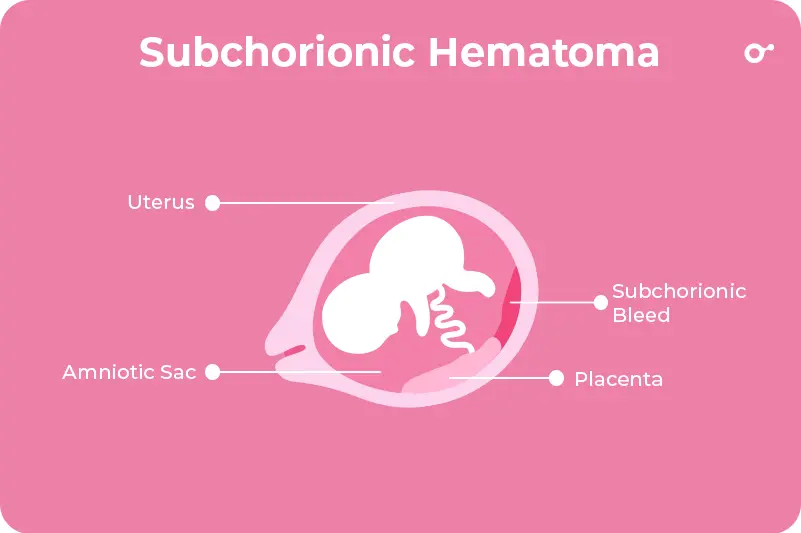
This is when blood pools up between the uterine wall and the chorionic membrane, which protects the amniotic sac. Subchorionic hematomas usually occur in women who are 10-20 weeks pregnant. But it can happen at earlier stages as well.
Women with subchorionic hematoma are at increased risk of miscarriage and are more likely to have placental abruption. This is when the placenta detaches from the uterus. The only way to know for sure if you’re experiencing subchorionic hematoma is to get an ultrasound.
Ectopic pregnancy
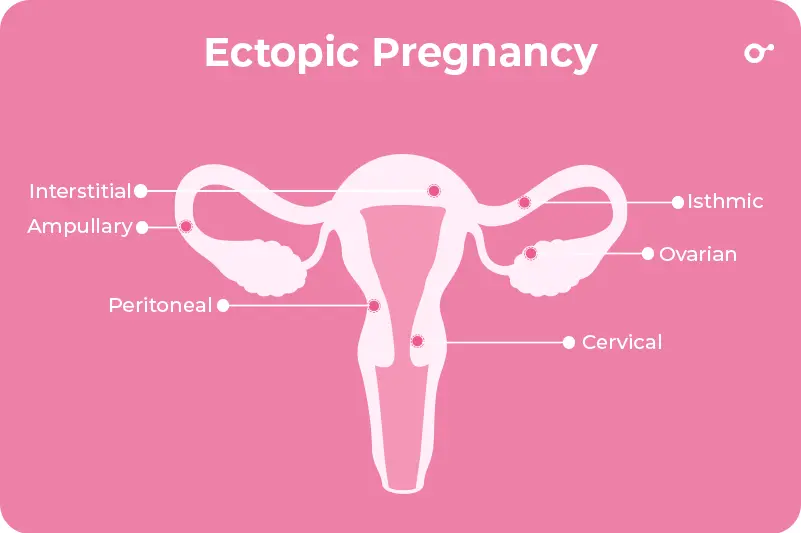
In about 1.3-2.4% of pregnancies, the embryo implants outside the womb. This is known as an ectopic pregnancy and it typically happens in the fallopian tube. While rare, ectopic pregnancies are serious and can lead to internal bleeding. For this reason, they need prompt medical attention.
Symptoms of ectopic pregnancy include heavy bleeding, low back pain, and cramping or pain on one side of the abdomen. If you experience these symptoms contact your doctor right away.
Early pregnancy loss
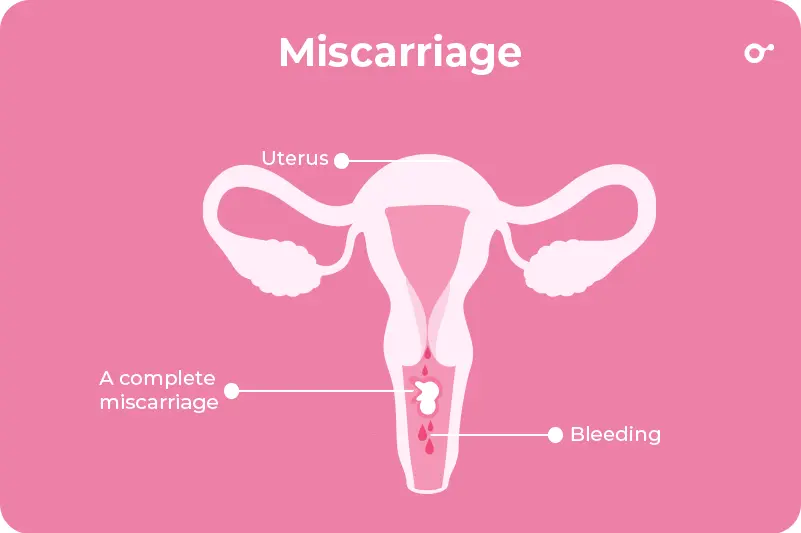
Heavy bleeding is more common in pregnancies that miscarry. And while devastating, around 10% of pregnancies result in early miscarriages.
While vaginal bleeding is the most common sign of miscarriage. It can vary from light spotting to brownish discharge, to a heavy flow with clots.
Cramping, pain, or passing tissue from your vagina are other clues you may be having an early pregnancy loss. If you suspect this, know it’s not your fault and you’re not alone. Reach out and surround yourself with a support system to help you through this difficult time.
Molar pregnancy
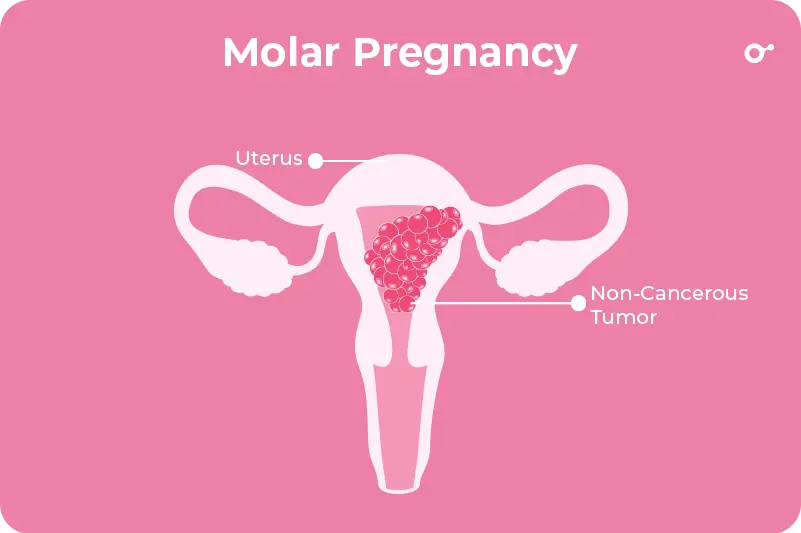
This is a pregnancy complication where a non-cancerous tumor grows in the uterus. In molar pregnancies, the placenta tissue is filled with fluid-filled cysts.
In some molar pregnancies, a fetus will develop. But because there’s no placenta to nourish it, the fetus is unable to survive.
Molar pregnancies may cause symptoms such as:
- Vaginal bleeding
- Severe nausea
- Vomiting
- Abdominal pressure or pain
- The passage of grape-like cysts
When to see a doctor👨⚕️
It’s always a good idea to check in with your health care provider anytime you have unusual vaginal bleeding. This is especially true if you bleed heavily, or the bleeding is accompanied by blood clots or pain.
While it may be implantation bleeding, it could be something more serious. Visiting your healthcare provider is the only way to know for sure. They can order blood tests or an ultrasound to uncover the cause of your bleeding.
Takeaways
- Implantation bleeding is light bleeding or spotting that occurs when the fertilized egg attaches to the lining of the uterus.
- Implantation bleeding is typically light and occurs around 10-14 DPO, or the week before your expected period.
- Some theorize that heavy implantation bleeding could be a sign of carrying twins. Yet currently, there’s no research to back this up.
- Heavy implantation bleeding isn’t the norm and could be a sign of an underlying health condition. This includes ectopic pregnancy, miscarriage, molar pregnancy, or subchorionic hematoma.
- Contact your doctor if you experience any unusual bleeding, or if you have other symptoms such as pain or blood clots.
Was this article helpful?
- Time of implantation of the conceptus and loss of pregnancy
- https://embryology.med.unsw.edu.au/embryology/index.php/Implantation
- Periods and fertility in the menstrual cycle – NHS
- Bleeding During Pregnancy | ACOG
- Patterns and predictors of vaginal bleeding in the first trimester of pregnancy – PMC
- Vaginal bleeding in very early pregnancy | Human Reproduction | Oxford Academic
- Subchorionic Hemorrhage – StatPearls – NCBI Bookshelf
- The Diagnosis and Treatment of Ectopic Pregnancy – PMC



